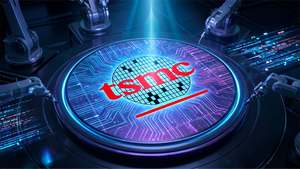Financial News
Q2 Earnings Shine: Corporate Profits Bolster Market, All Eyes on Nvidia's Upcoming Report

The second quarter of 2025 has delivered a robust performance for corporate America, with a significant majority of S&P 500 companies exceeding consensus earnings expectations. This wave of strong corporate profits has provided a crucial tailwind for the broader market rally, reinforcing investor confidence amidst lingering macroeconomic uncertainties. However, all eyes are now firmly fixed on the upcoming earnings report from Nvidia (NASDAQ: NVDA), a pivotal event poised to either confirm the sustainability of the artificial intelligence (AI) spending boom or introduce a new layer of caution into the market.
The impressive earnings season, which saw approximately 80% of S&P 500 companies surpass analyst predictions, has largely assuaged fears of an economic slowdown and justified elevated market valuations. This resilience, particularly from the technology and financial sectors, has been a key driver in pushing major indices to new highs. Nvidia's report, scheduled for August 27th, is not just another earnings call; it's a critical barometer for the future of AI investment and, by extension, a significant portion of the global technology landscape.
Corporate America's Strong Showing and the AI Imperative
The second quarter of 2025 witnessed a surprisingly strong earnings season, with 82% of S&P 500 companies beating earnings per share (EPS) predictions and 79% exceeding revenue forecasts. This marked the highest beat rate since Q2 2021, with aggregate EPS for S&P 500 companies increasing by 11% year-over-year, significantly outperforming the pre-season consensus of 2.8%. This widespread outperformance, particularly given initial cautious sentiment, has been a powerful catalyst for the market's upward trajectory.
The technology and communication services sectors were the undisputed stars, reporting year-over-year growth of 18% and 32% respectively. Giants like Meta Platforms (NASDAQ: META), Microsoft (NASDAQ: MSFT), and Alphabet (NASDAQ: GOOGL) led this surge, primarily fueled by sustained and aggressive investments in artificial intelligence and digital services. The "Magnificent 7" tech companies, in particular, played an instrumental role in buoying overall corporate earnings due to their substantial AI-related capital expenditures. The financial sector also enjoyed a successful quarter, benefiting from increased trading activity and strong demand for investment banking services, with major institutions such as JPMorgan Chase (NYSE: JPM), Goldman Sachs (NYSE: GS), and Citigroup (NYSE: C) outperforming expectations.
Nvidia's upcoming Q2 FY2026 earnings report is anticipated with bated breath, as the company is widely considered the bellwether for the AI industry. Analysts are forecasting Nvidia to report revenue in the range of $45.9 billion to $46.14 billion, a staggering year-over-year increase of over 53%. The Data Center segment is expected to remain the primary growth driver, with projections indicating it could account for a substantial portion of total sales, driven by the insatiable demand for its AI chips, especially for generative AI applications. The adoption of Nvidia's Blackwell GPU line, including the GB200 super chip, is a cornerstone of this dominance, with strong demand reported from major cloud providers and hyperscalers.
Winners and Losers in the Earnings Landscape
The Q2 earnings season clearly delineated the companies and sectors thriving in the current economic environment from those facing headwinds. The most prominent winners were undoubtedly the technology and communication services companies deeply entrenched in the AI revolution. Nvidia (NASDAQ: NVDA) stands at the forefront, with its chips being the foundational technology for AI development. A strong report from Nvidia would further solidify its market leadership and potentially boost the valuations of other AI-adjacent companies. Other beneficiaries include cloud providers like Microsoft (NASDAQ: MSFT) and Amazon (NASDAQ: AMZN), which are heavily investing in AI infrastructure and offering AI services built on Nvidia's technology. Software companies leveraging AI, such as Adobe (NASDAQ: ADBE) and Salesforce (NYSE: CRM), also stand to gain from the broader AI adoption trend.
The financial sector also emerged as a winner, with major banks reporting solid results driven by robust trading activity and investment banking. This indicates a healthy, albeit cautious, capital market environment. Consumer-focused businesses presented mixed results, with some, like Target Corporation (NYSE: TGT), reporting decreases in net sales and operating income, while others demonstrated resilience through digital growth.
Conversely, the Energy sector saw a notable decline of 25% year-over-year, and Materials fell by 12%, reflecting broader economic activity and potentially softer commodity prices. These sectors often serve as indicators of industrial demand and global economic health, suggesting that while parts of the economy are booming, others are experiencing contraction. Companies heavily reliant on traditional manufacturing or those with significant exposure to fluctuating commodity markets might continue to face challenges. Furthermore, any negative surprise from Nvidia could ripple through the entire tech ecosystem, potentially impacting chipmakers like Advanced Micro Devices (NASDAQ: AMD) and Broadcom (NASDAQ: AVGO), as well as server manufacturers and cloud infrastructure providers, by signaling a slowdown in AI capital expenditure.
Industry Impact and Broader Implications
The strong Q2 earnings, particularly from the tech sector, underscore a significant broader industry trend: the accelerating investment in artificial intelligence. This event fits squarely into the narrative of a technology-driven market, where innovation in AI is not just a buzzword but a tangible driver of corporate profits and capital expenditure. The sustained investment in AI infrastructure by hyperscalers and cloud providers creates a powerful ripple effect, benefiting not only chip manufacturers like Nvidia but also networking companies such as Arista Networks (NYSE: ANET), data center operators, and a myriad of software developers building AI applications.
The potential ripple effects extend to competitors and partners alike. A stellar Nvidia report could intensify the competitive landscape for other chipmakers like Advanced Micro Devices (NASDAQ: AMD) and Intel (NASDAQ: INTC), pushing them to accelerate their own AI chip development and market penetration strategies. Conversely, a weaker-than-expected report could signal a broader slowdown in AI spending, impacting the entire supply chain. Regulatory and policy implications also loom large, particularly concerning Nvidia's business in China. Ongoing U.S. export restrictions on advanced semiconductors have created volatility, with reports of Chinese regulators expressing security concerns over Nvidia's H20 chips. This geopolitical tension highlights the delicate balance companies must strike between global market opportunities and national security interests, potentially leading to further fragmentation of the global tech supply chain. Historically, periods of rapid technological advancement often lead to increased scrutiny from regulators regarding market dominance and fair competition, a scenario Nvidia and other AI leaders may increasingly face.
What Comes Next
Looking ahead, the market's trajectory will largely hinge on the continued strength of corporate earnings and the sustained momentum of AI investment. In the short term, Nvidia's Q2 FY2026 earnings report will be the most critical event. A positive report, confirming robust demand for its AI chips and strong forward guidance, could further fuel the market rally, particularly in the tech sector. Conversely, any signs of a slowdown in AI spending or significant challenges in key markets like China could trigger a market correction. Investors will also be closely watching Nvidia's guidance for Q3 FY2026, with current expectations ranging from $52.5 billion to $57 billion in revenue, as this will provide a forward-looking indicator of AI demand.
In the long term, the AI revolution is expected to continue driving significant market opportunities. Companies that can effectively integrate AI into their products and services, or provide the foundational infrastructure for AI, are poised for sustained growth. This may necessitate strategic pivots or adaptations for companies across various industries, as AI transforms business models and operational efficiencies. Potential challenges include increasing competition, regulatory hurdles, and the ongoing geopolitical tensions affecting global supply chains. Market opportunities may emerge in specialized AI applications, edge computing, and the development of more energy-efficient AI solutions. Potential scenarios range from a continued AI-driven bull market, where innovation propels valuations higher, to a more cautious environment if AI spending plateau's or faces significant headwinds.
Conclusion
The second quarter of 2025 has been a testament to corporate resilience, with strong earnings largely bolstering market confidence and extending the current rally. The key takeaway is that despite macroeconomic uncertainties, significant portions of the economy, particularly the technology sector, are demonstrating robust growth, primarily driven by the transformative power of artificial intelligence. Nvidia's upcoming earnings report is not merely a financial update; it is a critical bellwether for the entire AI industry and a significant indicator of the broader market's health.
Moving forward, investors should closely monitor not only the headline numbers from Nvidia but also the company's commentary on AI demand, supply chain dynamics, and its outlook for future quarters. The sustainability of the current market rally will depend on companies' ability to maintain this earnings momentum and navigate potential policy-driven volatility and geopolitical complexities. While the AI revolution presents immense opportunities, it also introduces new risks, including intense competition and regulatory scrutiny. Investors should watch for signs of broadening market participation beyond the "Magnificent 7" and a potential rotation into value and cyclical sectors for a more sustained and balanced bull market in the coming months. The future of the market, for now, appears inextricably linked to the trajectory of AI, with Nvidia at its epicenter.
More News
View More




Recent Quotes
View MoreQuotes delayed at least 20 minutes.
By accessing this page, you agree to the Privacy Policy and Terms Of Service.



